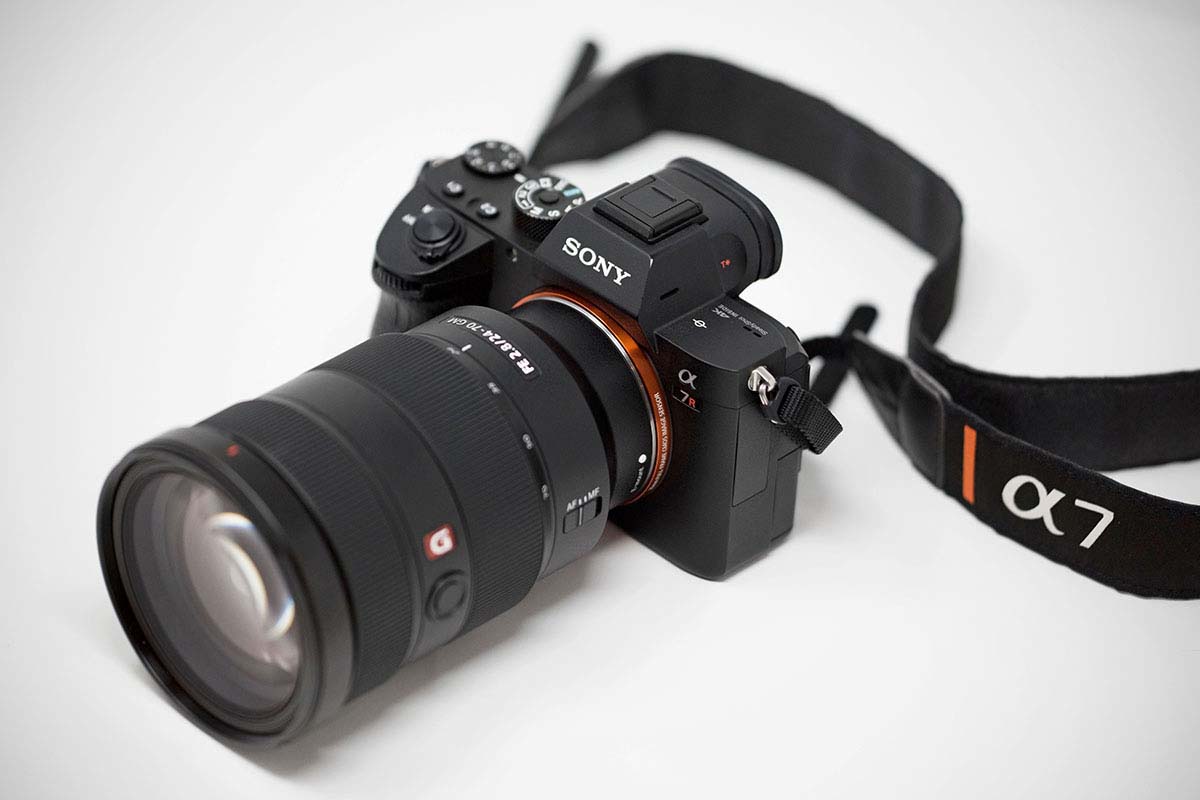
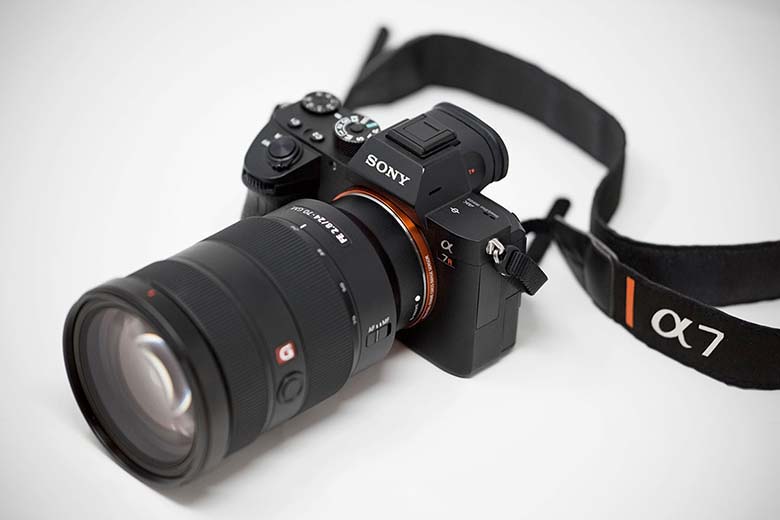
Sony a7R III (Switchback Travel)


Sony a7R III (Switchback Travel)
The mirrorless revolution is in full swing. These impressive digital cameras pack large image sensors into compact bodies, offering some of the best image and video quality on the market with less bulk than a DSLR. And as the lens options continue to expand, going mirrorless makes more sense now than ever. Below we break down the best mirrorless-interchangeable lens systems of 2020, from full-frame models for professionals to leading budget options. For more background information, see our mirrorless camera comparison table and buying advice below the picks.
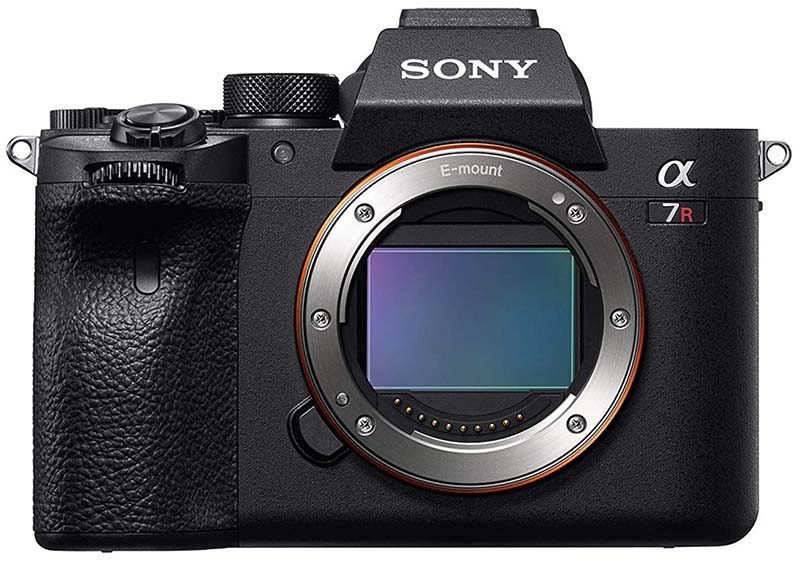 Category: Full frame
Category: Full frame
Megapixels: 61
Weight: 23.5 oz.
What we like: The highest-resolution mirrorless camera on the market and a great option for landscape photography.
What we don’t: Pricey and 61 megapixels is overkill for most people.
Lenses: 10 Great Sony FE (Full Frame) Lenses
Just when it seemed like competing brands Canon, Nikon, and now Panasonic might catch up, Sony released the Alpha a7R IV. New for fall of 2019, this sleek mirrorless camera features an extremely impressive 61 megapixels, which far surpasses the a7R III (42.4 MP) and Panasonic S1R (47.3 MP) as the highest resolution mirrorless camera on the market. Sony also improved the autofocus significantly, which wasn’t a shortcoming with the older model but makes the IV more attractive for action and video. Add in easy-to-use functionality, a wide array of video speeds, and premium build quality including weather sealing, and this is a superb camera that should make even the most discerning photographers happy.
The big question for many is whether to pay up for the pricey Sony a7R IV or save with the older a7R III or Nikon Z 6 below. The a7R III currently is selling for $1,000 less and its 42.4 megapixels are ample for most people—even professionals. The autofocus improvements on the IV are nice, as is the real-time eye autofocus while shooting video, but many other features and specs remain the same. For pixel peepers, serious landscape photographers, and those with deep pockets, the IV is the new king of the hill, but the a7R III and Z 6 are cheaper and quite capable in their own right.
See the Sony Alpha a7R IV
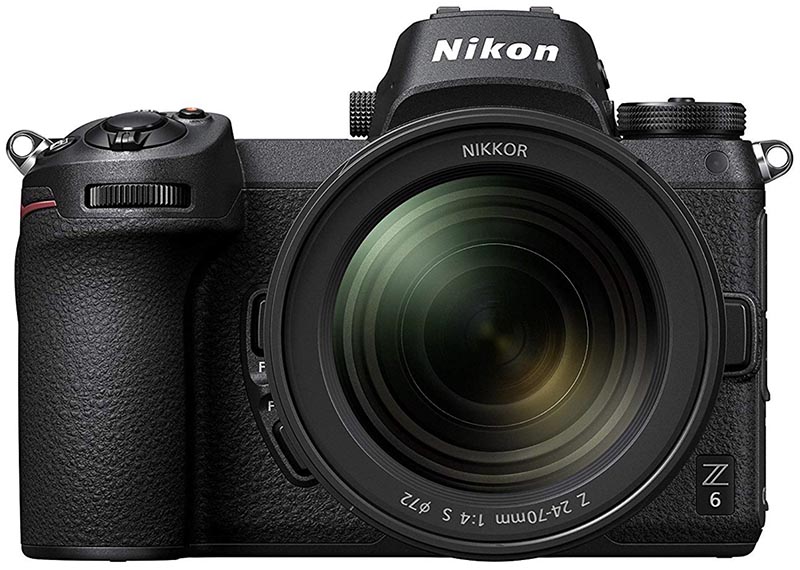
Category: Full frame
Sensor size: 864 sq. mm
Megapixels: 24.5
Weight: 20.6 oz.
What we like: Roughly half the price of the Sony a7R IV above.
What we don't: Autofocus could be improved and limited Z-mount lens selection.
Sony’s Alpha a7R IV above may be the better all-around mirrorless camera in terms of specs, but you would be hard-pressed to find a better value than the Nikon Z 6. This sleek camera checks almost all of the boxes: it boasts a full-frame image sensor, in-body image stabilization, fast continuous shooting at 12 frames per second, a wide range of video speeds, and a tough, weather-sealed body that is built to Nikon's lofty standards. Plus, with a relatively small form factor and weight of 20.6 ounces, you get much better portability than full-frame DSLRs like the Nikon D750 (26.5 ounces) and hefty D850 (32.3 ounces).
Where does the Nikon Z 6 fall short? The autofocus is solid overall but lags behind the competition in certain aspects, and subject tracking and refocusing in particular. And in choosing between Nikon and Sony mirrorless, lens selection made the difference for us. The available Z-mount lenses in 2020 are good but not great, and Sony is far ahead in this regard (even Canon's RF initial offerings have faster apertures). But Nikon is making strides and the mirrorless lens options continue to improve, and if you already own Nikon DSLR lenses, the Z 6 is sold with an FTZ adapter that makes your FX glass fully compatible.
See the Nikon Z 6
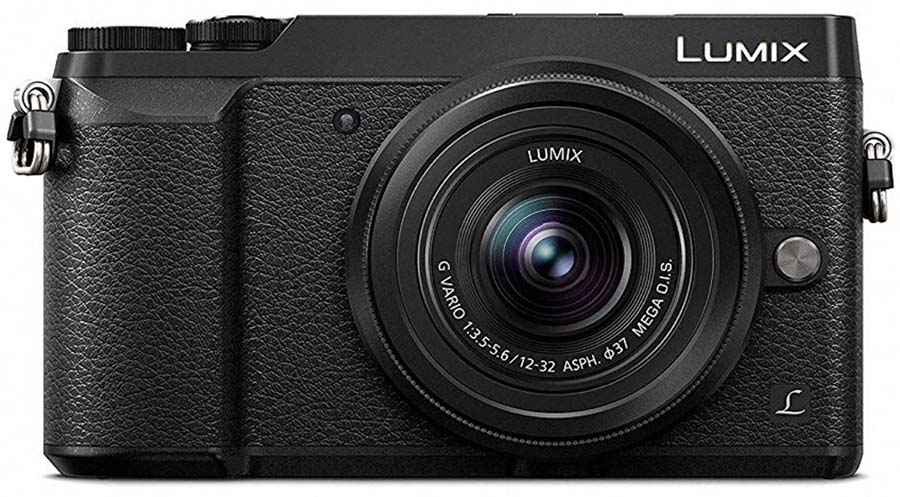 Category: Entry level
Category: Entry level
Sensor size: 225 sq. mm
Megapixels: 16
Weight: 15 oz.
What we like: A tremendous value for a mirrorless camera with two lenses.
What we don't: Fewer megapixels than the Sony a6000 below.
Over the many years that this article has been in existence, the Panasonic GX85 kit is one of the best values we’ve seen. For just under $500, you get a compact mirrorless camera from a leading brand that features 4K video, in-body image stabilization, shooting speeds of up to 10 fps, and built-in Wi-Fi. Perhaps most impressively, the GX85 kit includes two lenses: a 12-32mm and 45-150mm, giving you a nice range of focal length coverage from wide angle to telephoto. We especially like the low-profile size of the 12-32mm, which weighs just 2.5 ounces and is a great walk-around lens for travel and everyday use.
In terms of competitors, the Sony Alpha a6000 below is an old favorite and currently $448 with one kit lens. The Sony has more megapixels at 24.3 and a larger APS-C image sensor, but lacks modern features like 4K, built-in image stabilization, and touchscreen functionality, all of which we think are fairly important. All in all, both are excellent mirrorless cameras at attractive price points, so your decision may come down to brand and lens preference. In this case, we think the two-lens bundle and more complete feature set of the Panasonic GX85 are hard to pass up.
See the Panasonic Lumix GX85
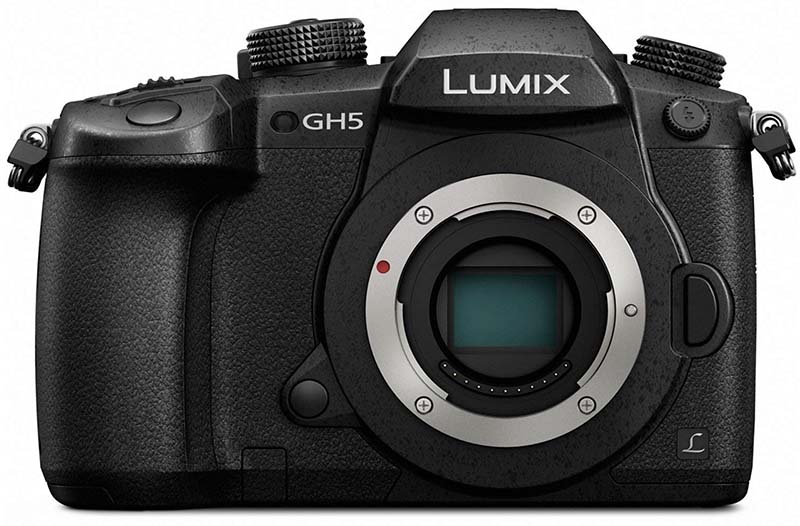 Category: Semi pro
Category: Semi pro
Sensor size: 225 sq. mm
Megapixels: 20.3
Weight: 25.6 oz.
What we like: Premium video quality and advanced feature set.
What we don't: Less of an all-rounder than the Panasonic G9 below.
Lenses: 10 Great Micro Four Thirds Lenses
Among its mirrorless peers, Panasonic has had a leg up in the video department for years, and the GH5 is one of their flagship cameras for this purpose. It boasts 4K video speeds that can rival any pro DSLR, a highly advanced autofocus system, built-in image stabilization, and a tough, weather-sealed body that can handle long shoots in a variety of conditions. You also get 10-Bit recording, a full HDMI socket, and a host of advanced functionality options. This substantial feature set makes the GH5 a leading choice among professional video shooters looking for a compact set-up.
Keep in mind that even though the Panasonic Lumix GH5 is ranked here due to its standout video prowess, it’s not necessarily the best all-rounder. For example, Panasonic's own G9 below is newer, cheaper, better suited for stills, and still very capable for video. Those who want a mirrorless camera strictly for video will appreciate the features and functionality of the GH5, but in our opinion, the G9 is the more versatile option overall. And for a full-frame competitor to the GH5, see the video-centric Sony Alpha a7S II.
See the Panasonic Lumix GH5
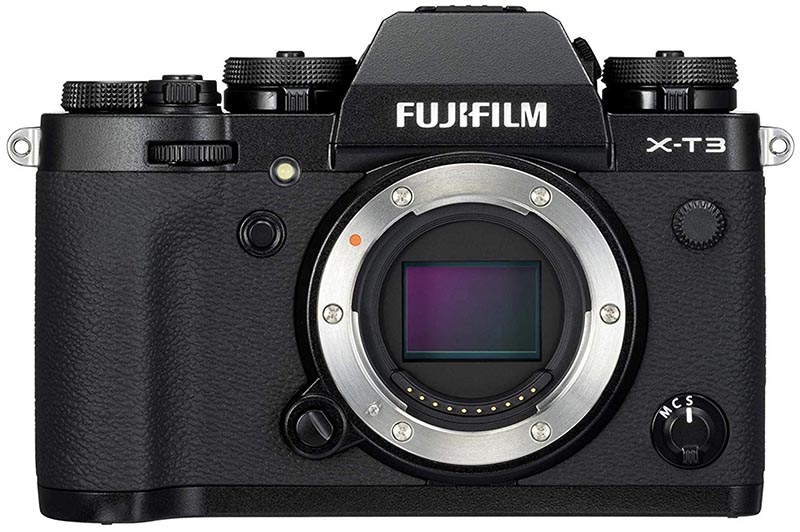 Category: Semi pro
Category: Semi pro
Sensor size: 368 sq. mm
Megapixels: 26.1
Weight: 19 oz.
What we like: Top-tier image and build quality; impressive feature set.
What we don't: No in-body image stabilization and short battery life.
Lenses: 10 Great Fujifilm X-Mount Lenses
We'll start by saying that we love Fujifilm mirrorless cameras. They are sleek, well-built, have the truest color rendition of any brand, and the Fujinon lens collection is superb. For uses like travel, portraits, and street photography, you'd be hard pressed to find a better camera for your money. At the same time, the X-T3 does not have a full-frame image sensor like the Sony Alpha series, Nikon's Z 6 and Z 7, and the Canon EOS R below. Many professionals stick exclusively to full frame and rightfully so, but the Fujifilm X-T3 is a powerhouse camera in its own right that should make even the most discerning photographers happy.
The X-T3 was released at the end of last year, so what changed on this camera? The simple answer is that just about everything improved: Fujifilm bumped up the megapixel count to 26.1, made major improvements to the autofocus system across the board, and added touch sensitivity to the rear LCD (we love the touch focus feature in particular). You also get a faster burst rate at 11 frames per second, a new processor that helps everything function quickly and smoothly, and video features that now are more competitive with the field. The two biggest downsides of the X-T3 are the lack of in-body image stabilization and the relatively short battery life, but those are small hurdles to overcome for an otherwise outstanding mirrorless camera.
See the Fujifilm X-T3
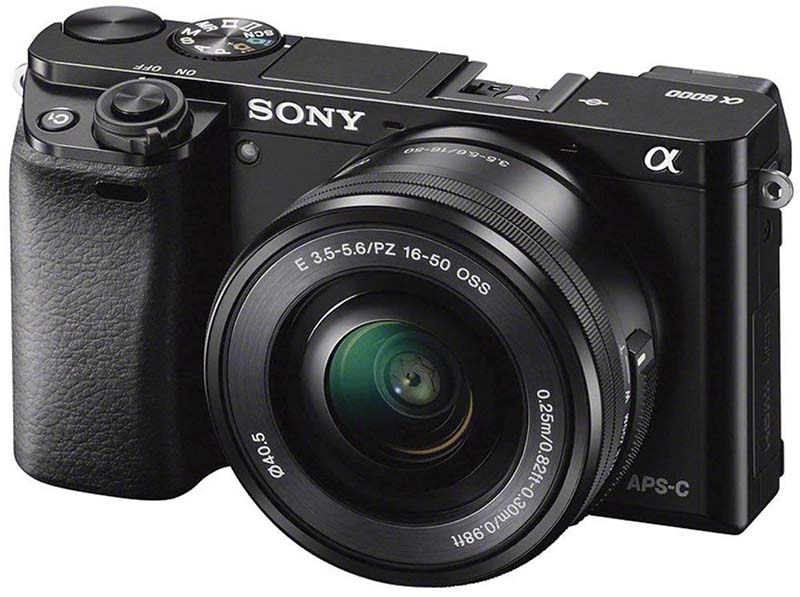 Category: Entry level
Category: Entry level
Sensor size: 366 sq. mm
Megapixels: 24.3
Weight: 12.2 oz.
What we like: A tremendous value.
What we don't: Lacks 4K video and other modern features.
Lenses: 11 Great Sony E-Mount Lenses
The Sony a6000 is getting a little long in the tooth, but remains one of the more popular mirrorless cameras and for good reason. For less than $500 with a kit lens, you get a 24.3-megapixel APS-C image sensor, fast shooting at up to 11 frames per second, built-in Wi-Fi, and a total weight of just over 12 ounces. It’s true that this camera line has improved significantly over the years, including with the newer a6400 and a6500, but those models are nearly double the price or more. If you’re looking to go mirrorless without breaking the bank, the a6000 is a nice choice.
What do you give up by going with the Sony a6000? The camera lacks modern features like 4K video, in-body image stabilization, and weather resistance, plus the autofocus isn’t nearly as advanced as the newer models. On the flip side, the a6000 has the same resolution, build quality, and easy-to-use functionality that Sony has built its reputation on. For those looking to save even more, the entry-level Sony a5100 is slightly less capable than the a6000—it has no electronic viewfinder, for example—but is only around $450 with a kit lens. And for another fun budget option from a different brand, see the Canon EOS M50 below.
See the Sony Alpha a6000
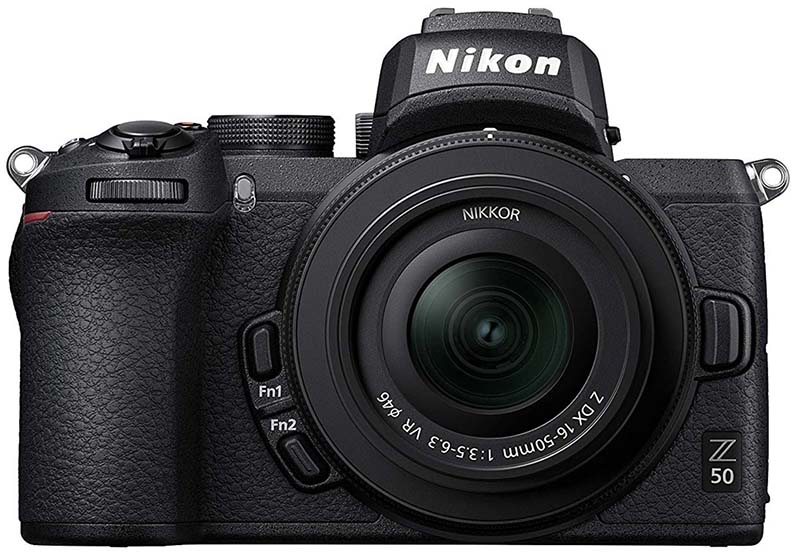 Category: Entry level +
Category: Entry level +
Sensor size: 369 sq. mm
Megapixels: 20.9
Weight: 13.93 oz.
What we like: Great image quality and ergonomics.
What we don’t: Only two native Z-mount DX lenses.
In a very competitive part of the mirrorless camera market, Nikon has impressed a lot of folks with the new Z 50. Playing off the success of the full frame Z 6 and Z 7, this sleek APS-C camera produces excellent images and videos, is a standout ergonomically with a modern feel, and has an advanced autofocus system that is borrowed from the Z 6. At just under 14 ounces and with a compact form factor, the Z 50 is the mirrorless camera that many Nikon enthusiasts have been waiting for and does not disappoint.
As with any new system, lens selection is the most notable shortcoming of the Z 50. At the time of this update, Nikon has released just two “Z DX” lenses: the 16-50mm f/3.5-6.3 included with the camera and a 50-250mm f/4.5-6.3. There is an FTZ adapter that makes Nikon DSLR glass compatible, and you can use Nikon’s “Z FX” full-frame lenses on the Z 50, but many of those cost much more than the camera, are heavy, and will outperform the crop sensor. Nikon’s latest lens roadmap does show an upcoming 18-140mm, but that’s still a relatively unimpressive collection including no primes. In the end, the Z 50 itself can go head-to-head with competing models from Sony, Canon, and Fujifilm, but the lens selection is far behind.
See the Nikon Z 50
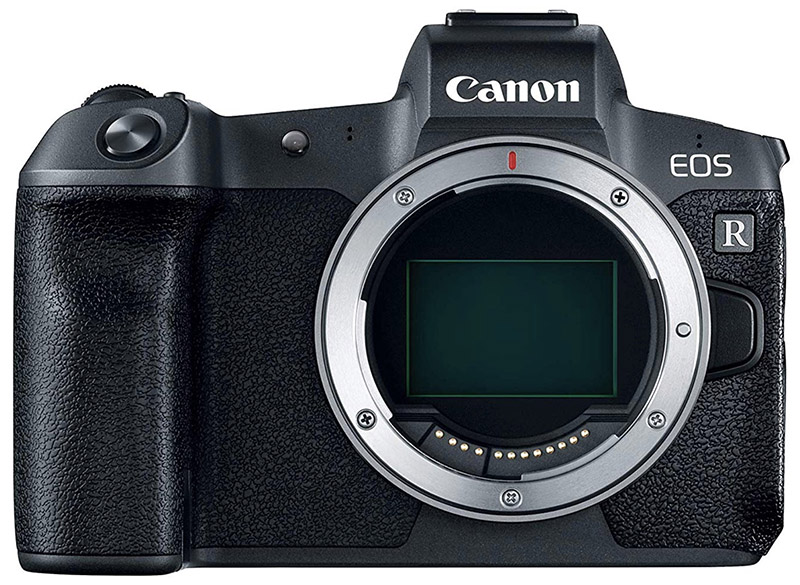 Category: Full frame
Category: Full frame
Sensor size: 864 sq. mm
Megapixels: 30.3
Weight: 20.5 oz.
What we like: More megapixels than the Nikon Z 6 or Sony a7 III.
What we don't: Lacks in-body image stabilization.
Sony was the only game in town in the pro mirrorless market for years, while Canon fans waited patiently for their time. New for last year, the EOS R is a very strong start and has generated a lot of excitement. You get 30.3 megapixels of full-frame resolution (more than the Nikon Z 6 or Sony a7 III), a robust autofocus system, and fast buffering for action photography and video. Perhaps most importantly—and the reason many people go mirrorless—the Canon EOS R weighs just 20.5 ounces and has a much smaller form factor than its DSLR counterparts. The Canon 5D Mark IV, for example, weighs 28.2 ounces and is significantly larger in size.
It's a tough call between the three brands now competing for the attention of professionals and enthusiasts looking to go mirrorless, and in all honesty, the choice often comes down to your existing lens collection. It's worth noting that Canon's EF to EOS R adapter (offered with the camera for only $99 more) is getting high marks in terms of performance with EF lenses, and you also can use EF-S lenses and the camera has a nifty automatic crop mode. However, we would like to see Canon add in-body image stabilization to the mix, which is the major downside of this camera, but that very well may happen sooner rather than later.
See the Canon EOS R
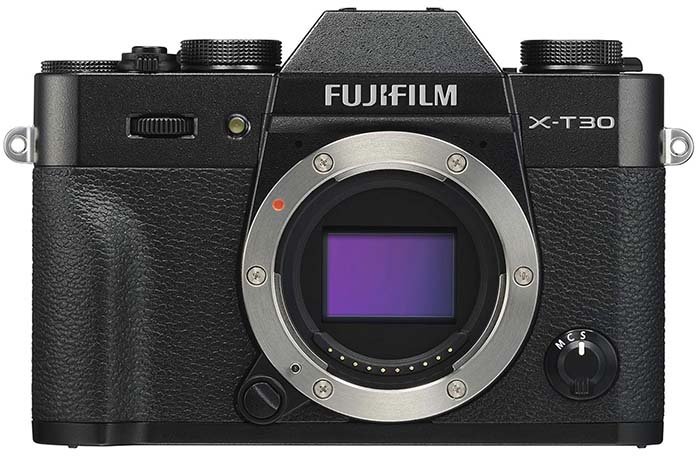 Category: Entry level +
Category: Entry level +
Sensor size: 368 sq. mm
Megapixels: 26.1
Weight: 13.5 oz.
What we like: The same sensor and image processor as the pricier X-T3 above.
What we don't: No weather sealing.
Lenses: 10 Great Fujifilm X-Mount Lenses
Fujifilm's flagship mirrorless camera is the X-T3 above, but the new X-T30 might be even more impressive for the price. Released in spring of last year, you get the same image sensor as the X-T3 in a smaller package and at a cheaper price point. What features do you lose out on? The X-T30 is not weather sealed, has an inferior viewfinder, a lower resolution LCD screen, and more limited 4K video speeds. But image quality is largely the same, and we love the X-T30 for travel and everyday use.
Keep in mind that the Fujifilm X-T30 is behind the field in some ways. As mentioned above, it's not weather sealed (comparable mirrorless cameras like the Sony a6300 and Olympus OM-D E-M5 Mark II are). And Fujifilm video quality still is inferior to brands like Sony and Panasonic, although it has improved significantly over the past few years. But for those who shoot mostly still photography and want premium image quality in a compact package, the X-T30 is an excellent mirrorless camera at a good price.
See the Fujifilm X-T30
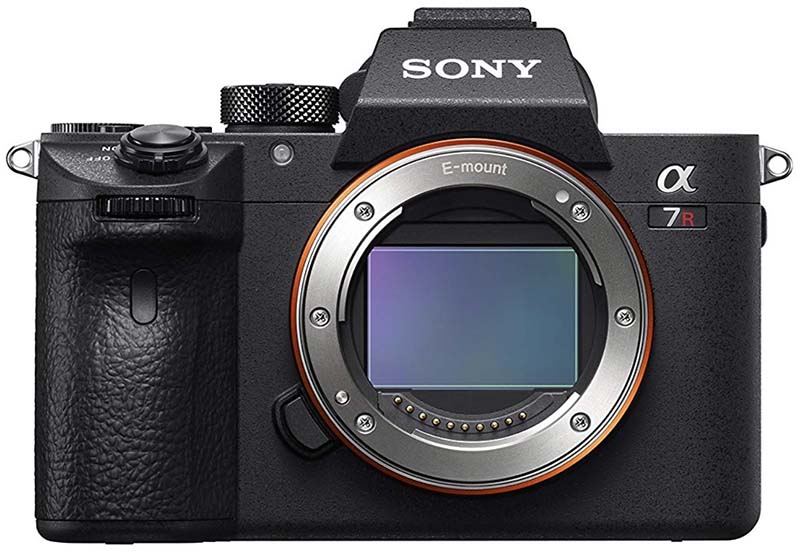 Category: Full frame
Category: Full frame
Sensor size: 864 sq. mm
Megapixels: 42.4
Weight: 23.2 oz.
What we like: The whole package in a mirrorless camera for both stills and videos.
What we don't: Still one of the more expensive cameras on this list, and lenses aren't cheap either.
Lenses: 10 Great Sony FE (Full Frame) Lenses
The Sony a7R IV above is the new kid on the block, but the a7R III still is a very viable option at a cheaper price point. This sleek camera pretty much does it all: you get 42.4 megapixels of resolution, superb autofocus and tracking, in-body image stabilization, 4K video, and weather sealing—we could go on and on. Importantly, the III got an upgraded battery type (FZ100) from the older a7R II, which made a world of difference (no more carrying around a bag of extra batteries). For everything from still photography to videos, it's one of the top all-around mirrorless cameras on the market.
What are the shortcomings of the Sony a7R III? Despite the recent drop in price, it's still reserved for photographers with bigger budgets, and GM lenses aren't exactly cheap either. For those who want to spend less, Sony does make the a7 III (no "R") below, which has fewer megapixels at 24.2 but boasts many of the same features for significantly less. It’s worth noting that Sony's full-frame competition is increasing: last year Nikon released its highly anticipated Z 6 and Z 7 mirrorless cameras, Canon has the EOS R and upcoming EOS Ra, and Panasonic now has the S1, SHR, and S1H. We still love Sony, but the field is becoming more crowded.
See the Sony Alpha a7R III
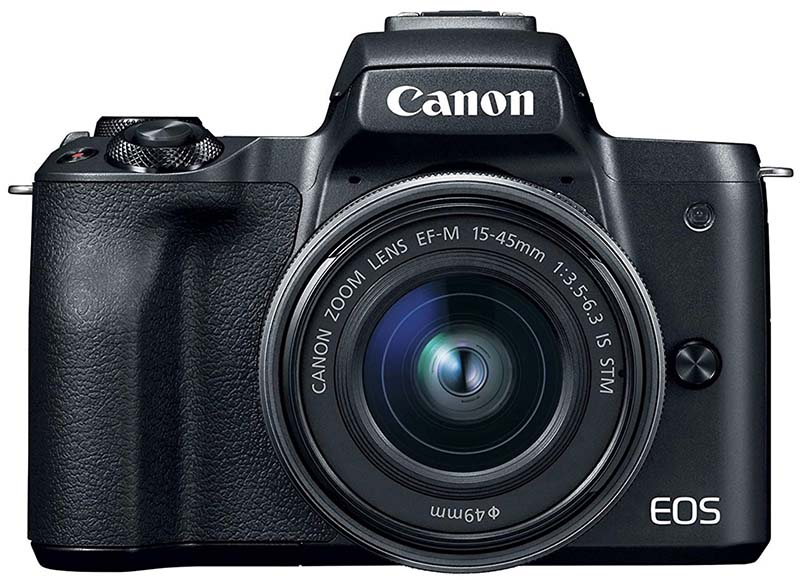 Category: Entry level
Category: Entry level
Sensor size: 332 sq. mm
Megapixels: 24.1
Weight: 13.6 oz.
What we like: Added a much-needed electronic viewfinder.
What we don't: Massive crop in 4K mode.
Canon mirrorless cameras still aren't on par with the likes of Sony or Fujifilm, but they are gaining ground with the M50. This popular and attractively-priced mirrorless camera improves upon the older Canon M5 by adding 4K video capability, better autofocus, and a faster image processor. You also get a touchscreen LCD, which has a "Touch and Drag AF" feature that is great for making quick adjustments on the fly. Importantly, the M50 also adds an electronic viewfinder, which the M100 below lacks, and comes in a few hundred dollars cheaper than the M5. All things considered, the M50 is far from perfect but still one of our favorite Canon mirrorless cameras to date.
Canon's release of a 4K-capable mirrorless camera is a bit deceiving, however, as the 4K mode comes with a 2.56x crop. That is pretty substantial and means that if you're shooting 4K video with the 15-45mm lens, you're looking at an equivalent of 28.4-115.2mm (this makes shooting wide-angle video on the M50 nearly impossible). Another notable downside is that the M50 has the shortest battery life of any model on this list, coming in at a mere 235 shots per charge. Unless you're only interested in brief sessions, you'll likely need to carry multiple batteries.
See the Canon EOS M50
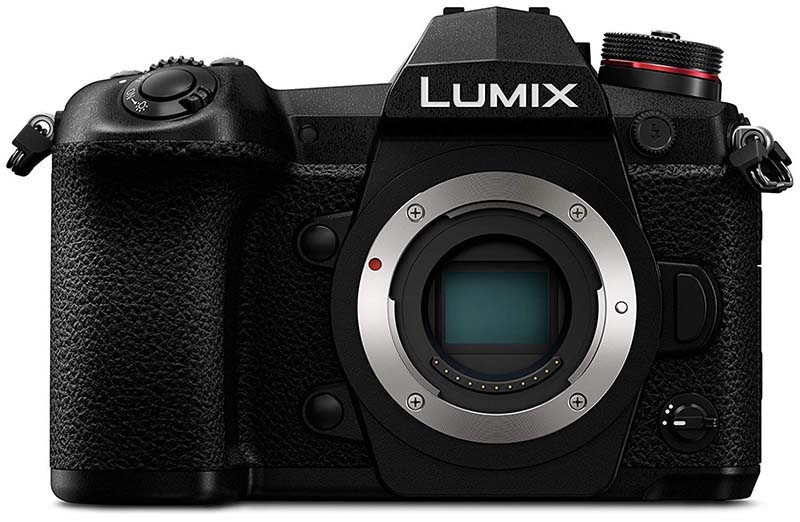 Category: Entry level +
Category: Entry level +
Sensor size: 225 sq. mm
Megapixels: 20.3
Weight: 20.3 oz.
What we like: A highly versatile camera with a wide selection of quality lenses to choose from.
What we don't: Not quite as video capable as the Lumix GH5.
Lenses: 10 Great Micro Four Thirds Lenses
Until the release of the Panasonic G9, the GH5 above was our favorite Micro Four Thirds camera, and it still is for video. While the GH5 prioritizes video and addresses stills later, the G9 does just the opposite, making it a more versatile and practical camera for most people. The G9 still records 4K video at 60p, but also shoots stills at 20 fps while the GH5 only does 12 fps. Another benefit of the G9 is the new USB port that allows you to charge the camera on the go or while in use, helping to ensure that you won't run out of battery during those longer sessions. And given the difference in price and lower weight, the G9 is one of the top Micro Four Thirds cameras on the market.
For those hesitant to buy a Micro Four Thirds camera based on the smaller sensor (more on that in our buying advice below), Panasonic did include a high resolution mode on the G9. The feature is intended mostly for landscape and architecture photographers, and it combines 8 photographs into a single and massive 80-megapixel file. While this can be highly beneficial for static subjects, those interested in shooting movement may find this feature obsolete. Either way, it's a nice touch on a very well-rounded mirrorless camera.
See the Panasonic Lumix DC-G9
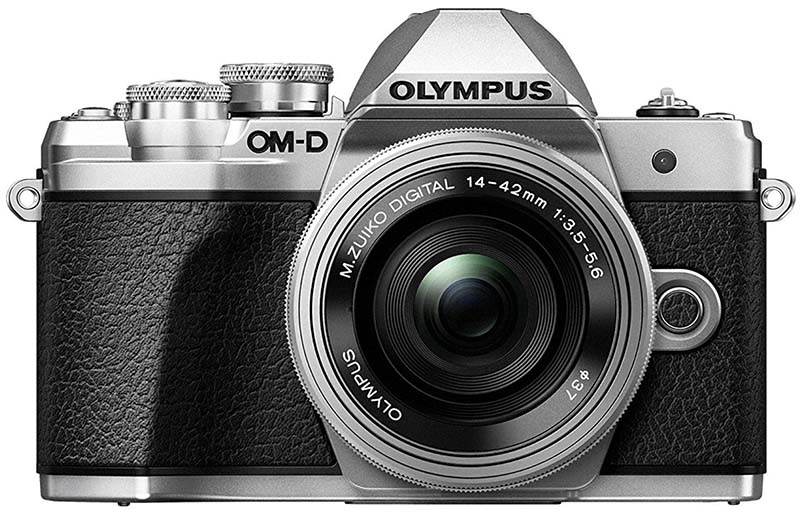 Category: Entry level
Category: Entry level
Sensor size: 228 sq. mm
Megapixels: 16.1
Weight: 14.5 oz.
What we like: Compact in size yet packed with features.
What we don't: Low on megapixels.
Lenses: 10 Great Micro Four Thirds Lenses
Olympus has been very competitive in the mirrorless market for years, but consumers have felt the squeeze when considering high-end models like the E-M1 Mark II. Enter the E-M10 Mark III, a more affordable option that offers Olympus's signature image and video quality for under $500 with a kit lens. New to the Mark III is 4K video, superior image stabilization, more autofocus points, and a more approachable menu system and user experience overall. Factor in the vast collection of Micro Four Thirds lenses, and you have a highly versatile travel camera with a small form factor.
We hemmed and hawed about whether to include the Mark III or Mark II here—newer isn't always better when you take price into consideration. The older model often can be found for less with the same kit lens, and unless you frequently shoot video, none of the upgrades are particularly groundbreaking. But we do like the sum of the changes, which is why we give the new E-M10 Mark III the edge.
See the Olympus OM-D E-M10 Mark III
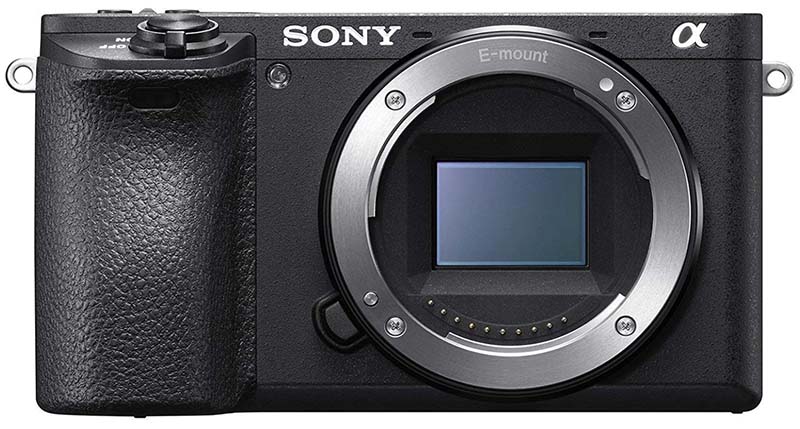 Category: Entry level +
Category: Entry level +
Sensor size: 366 sq. mm
Megapixels: 24.2
Weight: 16 oz.
What we like: Compact yet packs a serious punch.
What we don't: Pricey and short battery life.
Lenses: 11 Great Sony E-Mount Lenses
Just when you thought Sony couldn't keep innovating at the same blistering pace, they released the a6500 only months after its predecessor, the a6300. Why the quick upgrade? Both are solid mid-range mirrorless cameras that offer 4K video, advanced autofocus, and weather resistant bodies that are well suited for the outdoors. But the a6500 adds in-body image stabilization and touchscreen functionality to the rear LCD, both of which are useful changes. With the significant price increase in price over the a6300, the choice mostly comes down to budget.
It's worth noting that the a6500 didn't receive the same battery update as Sony's latest Alpha a7 cameras, so you'll still be battling a notoriously short battery life. And as is the case with full-frame cameras like the older Sony a7R II, some users have reported overheating when shooting 4K video on the a6500 for extended periods of time. This means that the Panasonic GH5 and G9 above still beat Sony for dedicated videographers, but the a6500 is a terrific all-around mirrorless option nevertheless.
See the Sony Alpha a6500
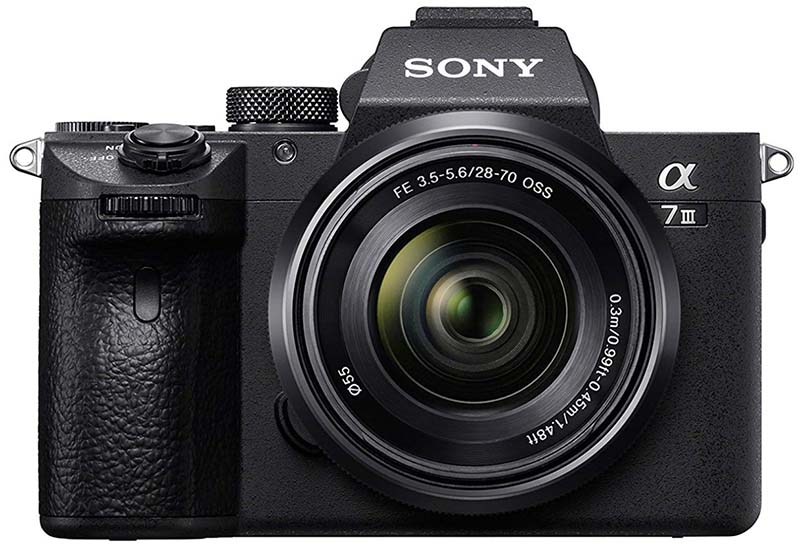 Category: Full frame
Category: Full frame
Sensor size: 864 sq. mm
Megapixels: 24.2
Weight: 22.9 oz.
What we like: A more affordable alternative to the Sony a7R III.
What we don't: Fewer megapixels.
Lenses: 10 Great Sony FE (Full Frame) Lenses
For those hoping to go full-frame without breaking the bank, there is a lot to like about the Sony Alpha a7 III. Most importantly, the camera incorporates many of the same features as the more expensive a7R III above (our top mirrorless pick) including an advanced autofocus system, fast burst rate of 10 fps, 4K video functionality, and more than double the battery life of the older Alpha a7 II. But with a price tag of less than $2,000, the a7 III is an approachable way to access to Sony's full-frame mirrorless lineup without compromising a ton in the way of performance.
What are the shortcomings of the Sony a7 III? Most notably, the camera has a 24.2-megapixel sensor, which is a considerable drop from the 42.4 megapixels of the a7R III. However, for many people and uses, this is ample resolution, can create outstanding images and videos, and won't take up as much space on your hard drives. And compared to the new full-frame Nikon Z 6 above, the Sony has superior autofocus, weighs slightly less, and has many more native lens options.
See the Sony Alpha a7 III
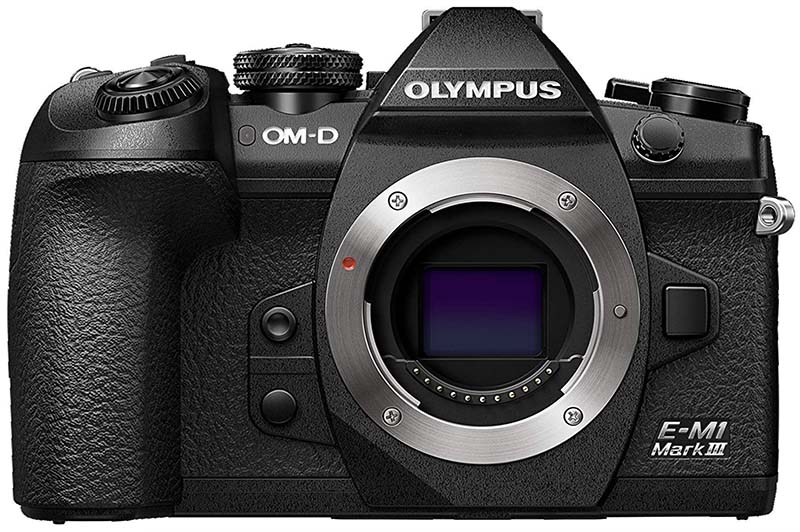 Category: Semi pro
Category: Semi pro
Sensor size: 226 sq. mm
Megapixels: 20.4
Weight: 20.5 oz.
What we like: Loaded with features and functionality.
What we don't: Expensive for what you get, and Olympus has been lagging behind in innovation.
Lenses: 10 Great Micro Four Thirds Lenses
For those who love the Micro Four Thirds system and have money to spend, the new OM-D E-M1 Mark III is an interesting option. We’ll start with the good news: this camera has pretty much all of the bells and whistles that enthusiasts want, including in-body image stabilization, fast burst rates for action photography, 4K video, and a weather-sealed magnesium alloy body that is great for shooting outdoors in tough conditions. For everything from travel to landscapes, this E-M1 Mark III can do it all.
That said, we’re sad to see that Olympus has been relatively stagnant in terms of innovation over the past years, to the point where some people are concerned about the brand’s future. The OM-D E-M1 Mark III, which is the company’s flagship mirrorless camera and was released in 2020, has the same 20.4-megapixel Micro Four Thirds image sensor as its predecessor (released in 2016). During that time, competitors have been aggressively moving toward full-frame mirrorless cameras at lower prices. Compared to the Mark II, you do get a nice bump in speed along with improved autofocus, but unfortunately the latest version just isn’t very competitive at this high price point.
See the Olympus OM-D E-M1 Mark III
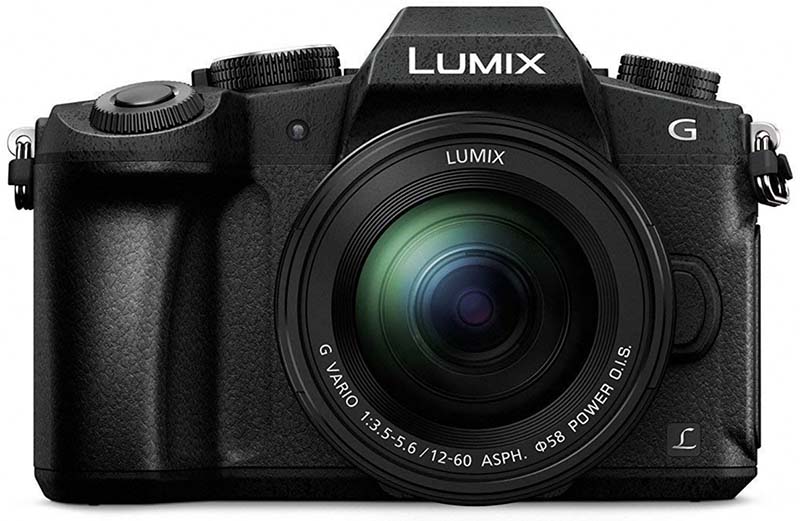 Category: Entry level
Category: Entry level
Sensor size: 224 sq. mm
Megapixels: 16
Weight: 14.6 oz.
What we like: 4K video and high fun factor.
What we don't: Lower resolution than most cameras on this list.
Lenses: 10 Great Micro Four Thirds Lenses
The Panasonic G85 is a tweener: it's not a true enthusiast mirrorless camera, but definitely shouldn't be categorized as entry level either. And if you compare it to a premium point-and-shoot like the Sony RX100 V that is similar in cost, we would take the G85 in a heartbeat. Simply put, if you're looking for quality photos and videos but don't need the features or resolution of the G9 above, give the G85 a serious look.
Panasonic is known for video, so it's no surprise that the G85 shoots 4K and is darn good at it. You also get fast continuous shooting, good autofocus for the price, and new to this model are weather sealing and built-in image stabilization. Compared to cameras like the Canon M50 or Sony a6000, you don't get quite the resolution with the smaller image sensor and fewer megapixels, but the 4K video, sleek design, and access to good lenses all are big selling points. For video shooters shopping in the sub-$700 price range, the G85 may be the ticket.
See the Panasonic Lumix G85
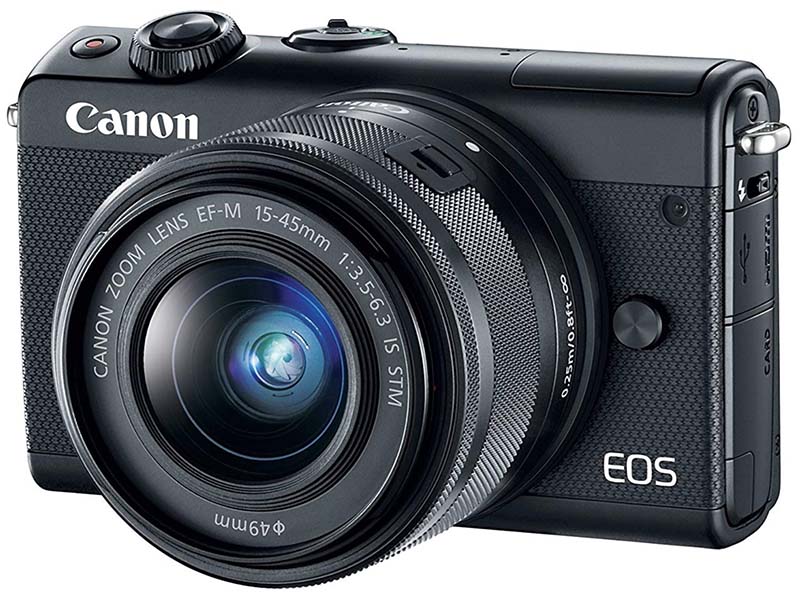 Category: Entry level
Category: Entry level
Sensor size: 332 sq. mm
Megapixels: 24.2
Weight: 10.7 oz.
What we like: Bargain basement price and low weight.
What we don't: No 4K video and limited lens options.
At just $450 with a 15-45mm kit lens (many advanced point-and-shoots cost more) the M100 is another nice mirrorless option from Canon and a great value. In terms of specs, you get 24.2 megapixels of resolution, decent autofocus, a burst rate of 6.1 fps (faster than Canon's entry-level DSLRs), and Bluetooth connectivity. And at just 10.7 ounces for the camera body, the M100 delivers a lot of functionality in a small package.
Keep in mind that the M100 does not have a viewfinder, meaning that you'll have to line up your photos and videos via the rear LCD, nor does it shoot 4K video like the M50 above. And although Canon's collection of EF-M lenses is growing and some third-party manufacturers have jumped into the mix, you won't find pro-grade options like you do with Fujifilm or Micro Four Thirds. But for those new to mirrorless or familiar with Canon systems, the M100 is an inexpensive camera that should get the job done.
See the Canon EOS M100
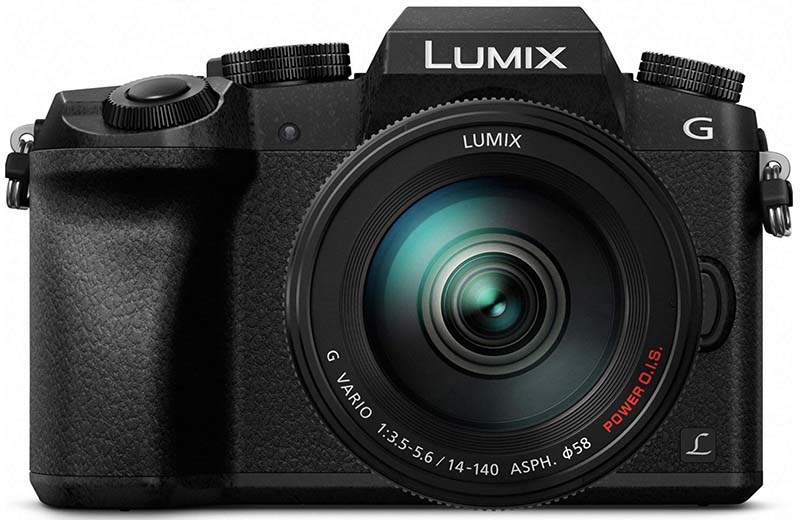 Category: Entry level
Category: Entry level
Sensor size: 224 sq. mm
Megapixels: 16
Weight: 14.6 oz.
What we like: 4K video and an EVF at a good price point.
What we don't: Fewer megapixels than newer entry-level models.
Lenses: 10 Great Micro Four Thirds Lenses
Good news for aspiring videographers and fans of Panasonic: you don't have to spend $1,000 for your mirrorless camera (or anything close to it). The G7 was released a few years ago and therefore isn't new, but is a solid value at less than $500 with a kit lens. In fact, it's one of the cheapest ways to access 4K video in 2020, plus you get an electronic viewfinder. Despite the drop in resolution from Sony's and Canon's latest entry-level models, Panasonic does a lot of things right including excellent video quality and features.
What do you sacrifice with the Panasonic G7 compared to the pricier G85 above? The G7 does not have built-in image stabilization, which admittedly is very helpful. In addition, the camera is not weather sealed and shoots slower at 7 fps vs. 9 fps on the G85. All of these are notable improvements that make the G85 attractive despite the jump in price. And for those shopping for a Micro Four Thirds camera on a budget, we suggest looking at the Olympus E-M10 Mark III above, which is a better camera overall.
See the Panasonic Lumix G7
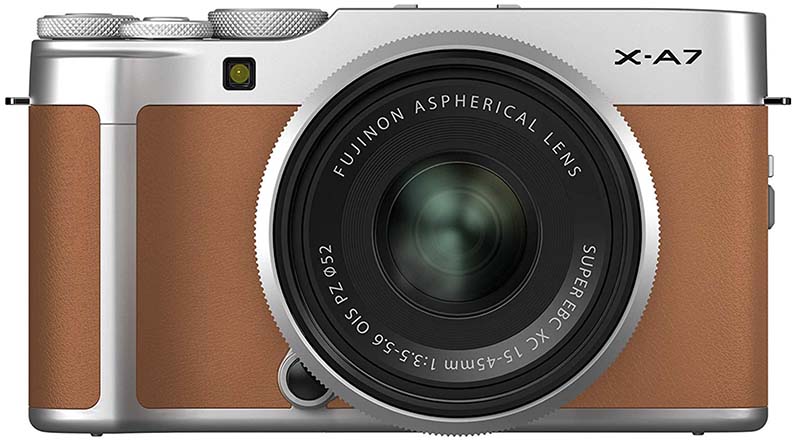 Category: Entry level
Category: Entry level
Sensor size: 369 sq. mm
Megapixels: 24.2
Weight: 11.3 oz.
What we like: Fujifilm image quality and lens selection.
What we don't: No viewfinder and expensive for an entry-level camera.
Lenses: 10 Great Fujifilm X-Mount Lenses
We love Fujifilm’s higher-end offerings like the X-T3 and X-T30 above, but things get a little shakier at the entry-level end of the spectrum. We’ll start by noting that the new X-A7 lacks a viewfinder of any kind, meaning you have to line up and shoot photos like you would on your smartphone. On the flipside, you get an APS-C image sensor, access to Fujifilm’s excellent collection of lenses, and a camera that is packed with easy-to-use presets and fun shooting modes. We also like the 14-45mm kit lens, which is well built, reasonably compact, and provides a solid focal length range.
What are the shortcomings of the Fujifilm X-A7? Given the improved quality of smartphone cameras in 2020, it’s tough to spend nearly $700 on something designed to do many of the same things. Without a viewfinder, this truly is an entry-level camera. And although the ergonomics are good, there aren’t enough standout features to merit the cost, in our opinion. We did like the old X-A5 when it was available for less than $500 with the same kit lens, but for budget seekers, we prefer some of the cheaper options above including the Panasonic GX85 and Sony a6000.
See the Fujifilm X-A7
| Camera | Price | Category | Sensor Size | MP | Weight | 4K | Burst | Weather |
|---|---|---|---|---|---|---|---|---|
| Sony Alpha a7R IV | $3,498 | Full frame | 850 sq. mm | 61 | 23.5 oz. | Yes | 10 fps | Yes |
| Nikon Z 6 | $1,797 | Full frame | 864 sq. mm | 24.5 | 20.6 oz. | Yes | 12 fps | Yes |
| Panasonic Lumix GX85 | $498 | Entry level | 225 sq. mm | 16 | 15 oz. | Yes | 10 fps | No |
| Panasonic Lumix GH5 | $1,398 | Semi pro | 225 sq. mm | 20.3 | 25.6 oz. | Yes | 12 fps | Yes |
| Fujifilm X-T3 | $1,299 | Semi pro | 368 sq. mm | 26.1 | 19 oz. | Yes | 11 fps | Yes |
| Sony Alpha a6000 | $484 | Entry level | 366 sq. mm | 24.3 | 12.2 oz. | No | 11 fps | Yes |
| Nikon Z 50 | $997 | Entry level + | 369 sq. mm | 20.9 | 13.93 oz. | Yes | 11 fps | No |
| Canon EOS R | $1,799 | Full frame | 864 sq. mm | 30.3 | 20.5 oz. | Yes | 8 fps | Yes |
| Fujifilm X-T30 | $1,099 | Entry level + | 368 sq. mm | 26.1 | 13.5 oz. | Yes | 8 fps | No |
| Sony Alpha a7R III | $2,498 | Full frame | 864 sq. mm | 42.4 | 23.2 oz. | Yes | 10 fps | Yes |
| Canon EOS M50 | $599 | Entry level | 332 sq. mm | 24.1 | 13.6 oz. | Yes | 10 fps | No |
| Panasonic Lumix DC-G9 | $998 | Entry level + | 225 sq. mm | 20.3 | 20.3 oz. | Yes | 20 fps | Yes |
| Olympus OM-D E-M10 III | $499 | Entry level | 228 sq. mm | 16.1 | 14.5 oz. | Yes | 8.6 fps | No |
| Sony Alpha a6500 | $998 | Entry level + | 336 sq. mm | 24.2 | 16 oz. | Yes | 11 fps | Yes |
| Sony Alpha a7 III | $1,998 | Full frame | 864 sq. mm | 24.3 | 22.9 oz. | Yes | 10 fps | Yes |
| Olympus OM-D E-M1 III | $1,799 | Semi Pro | 225 sq. mm | 20.4 | 20.5 oz. | Yes | 60 fps | Yes |
| Panasonic Lumix G85 | $698 | Entry level | 224 sq. mm | 16 | 14.6 oz. | Yes | 9 fps | Yes |
| Canon EOS M100 | $449 | Entry level | 332 sq. mm | 24.2 | 10.7 oz. | No | 4 fps | No |
| Panasonic Lumix G7 | $498 | Entry level | 224 sq. mm | 16 | 10.7 oz. | No | 4 fps | No |
| Fujifilm X-A7 | $699 | Entry level | 369 sq. mm | 24.2 | 11.3 oz. | Yes | 6 fps | No |
We've provided you with a ton of information on specific camera models, but the decision still can feel intimidating. Keep in mind that buying a camera body is an investment into a system and a company. Granted, you're never totally locked into a system, but once you buy a body and start building up your lens collection, you're financially invested and changing can be burdensome. The good news is that all of the brands we've listed are safe bets. All continue to demonstrate a desire to innovate in their own ways. If any of these companies were stagnant it would be easy to rule them out, but with Nikon and Canon emerging (something we discuss below), as well as Sony, Panasonic, Olympus, and Fujifilm not showing any signs of slowing down, you should be safe going with any of them.
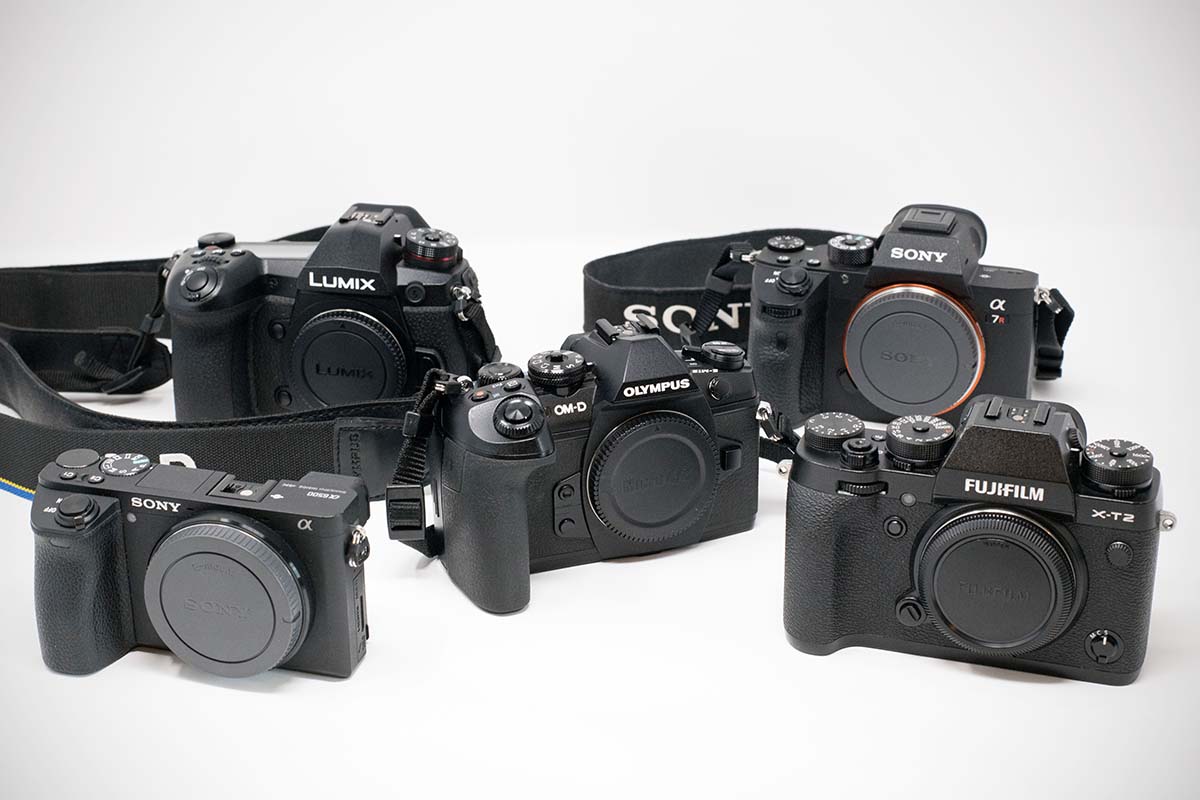
For those of you who hate vague answers and want something a bit more cut and dry, here you go. Keep in mind that these are generalizations and the majority of these systems are well-rounded and should work great for most people's needs. But if we had to break it down based off of trends, here is how we would do it:
_0.jpg)
Here at Switchback Travel, we praise image sensor size over megapixels, which has a more significant impact on image quality. The good news is that virtually all mirrorless cameras have large sensors that are similar to most entry-level and mid-range digital SLRs. The two most common sensor types are APS-C (Sony and Fujifilm) and Micro Four Thirds (Olympus and Panasonic). Sony's a7 series of full-frame mirrorless cameras boast full-frame sensors, which is second largest to the medium format sensors found in the Fujifilm GFX 50S and the Hasselblad X1D. Keep in mind that there is some variation between manufacturers and camera models (Canon's APS-C sensor is smaller than Sony's, for example).
Medium-format cameras long have been a staple for high-end portrait, fashion, and commercial photographers. With incredibly high resolutions due to the extra-large sensors, the images have detail that is impossible to replicate even with a full-frame camera. Unfortunately, these ultra-premium cameras have price tags to match. It's not uncommon to see bodies from Hasselblad and Phase One in the realm of $40,000, so it was pretty exciting when Hasselblad decided to release the X1D, the first mirrorless medium-format camera. At around $6,500, it offers a much more affordable path to medium format for those interested in achieving higher resolutions and better dynamic range. Then came the Fujifilm GFX 50S, another medium-format option at the same price point as the X1D.
At upwards of $10,000 when you factor in lenses, we don't see these cameras as being worth the money for most people. For the majority of folks looking for premium image quality, the 42.4-megapixel Sony a7R III should be more than satisfactory, and Nikon's new Z 7 is a whopping 45.7 megapixels. For around half the price, it's hard to argue against going that route. And although the Fujifilm GFX 50S and Hasselblad X1D offer a gateway into a world once reserved for wealthy and elite photographers, we don't see true medium format enthusiasts making the switch.
Megapixels matter, but not nearly as much as camera manufacturers and retailers would lead you to believe. For reference, the crop-sensor cameras on this list have megapixel counts somewhere between 16 and 24.3. Given that the majority of image sensors are either Micro Four Thirds or APS-C, you get fairly comparable image quality across the board. A mirrorless camera like the Sony Alpha a6500 with 24.2 megapixels and an APS-C sensor will produce slightly superior images than a camera like the Olympus OM-D E-M10 Mark III with 16.1 megapixels and a Micro Four Thirds sensor, but they are in the same ballpark. At the professional end of the spectrum, the Sony Alpha a7R IV boasts a whopping 61 megapixels (plus a full-frame sensor). Remember: it's the combination of sensor size and megapixels that matters.
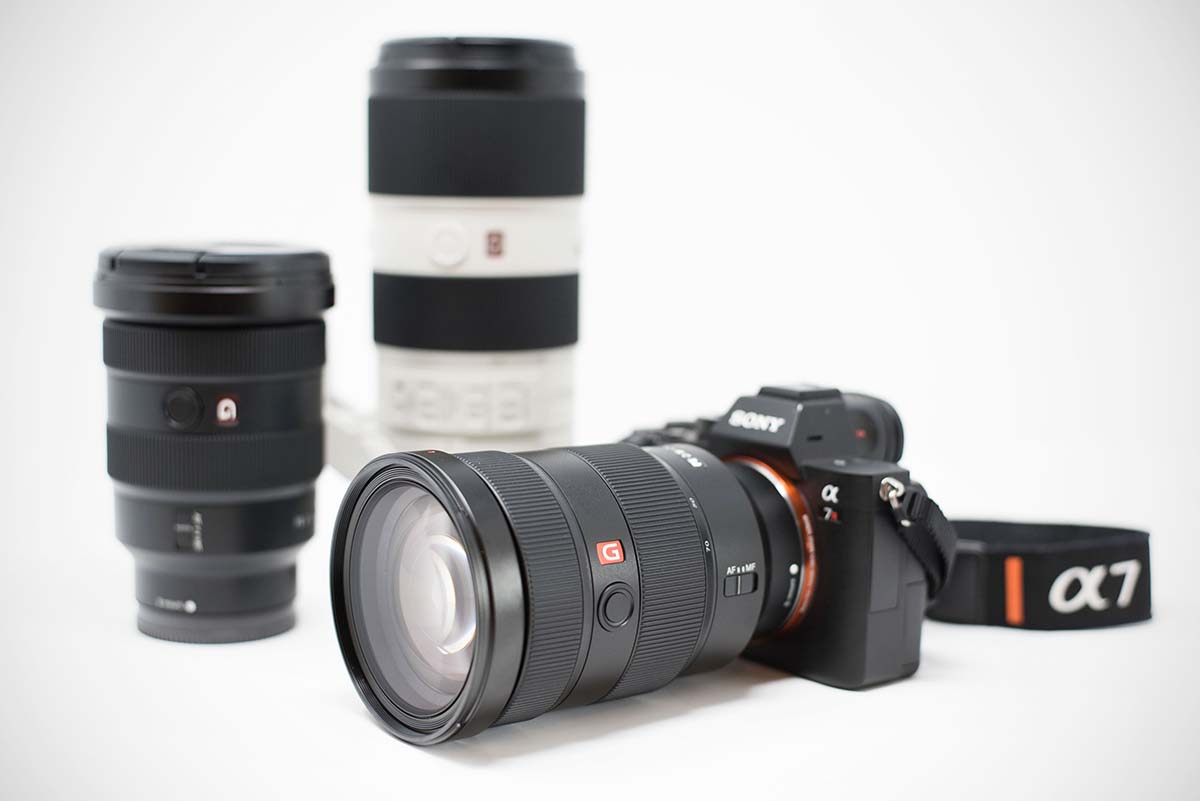
One of the biggest differences between entry-level mirrorless cameras and mid-range and high-end models is the inclusion of an electronic viewfinder, or EVF for short. An electronic viewfinder is a super helpful tool that allows for much greater accuracy in terms of composition and focus. On cameras without a viewfinder, you must align images via the LCD screen on the back much like you would with a point-and-shoot camera or smartphone. Many casual photographers may not mind, but an electronic viewfinder is a highly desirable feature for serious photographers. What is the cutoff for an electronic viewfinder? None of the mirrorless cameras on our list that are less than $600 have an electronic viewfinder, and all above $600 do. To check whether your desired model has an electronic viewfinder, see our comparison table above.
%20on%20mirrorless%20camera.jpg)
With specs like megapixels and sensor size getting the lion's share of the attention, don't overlook the importance of autofocus in your buying decision. Many cheaper mirrorless cameras cut costs with inferior autofocus, including the number of focus points and types of autofocus (phase detection and contrast detection). There aren't hard-and-fast rules as to what constitutes great autofocus, but good places to start are the number and type of focus points. Multiple focus points help improve accuracy, so the more the better. In addition, contrast detection is slower than phase detection, and cross-type sensors are more accurate than simpler vertical line sensors. Understanding the full complexities of autofocus is worthy of a full article in itself, but in general, you can expect autofocus to be less accurate on cheaper cameras and more accurate on pricier cameras (there is a strong correlation between price and autofocus quality). If a camera is an outlier to this rule, we will let you know in the write-ups above.
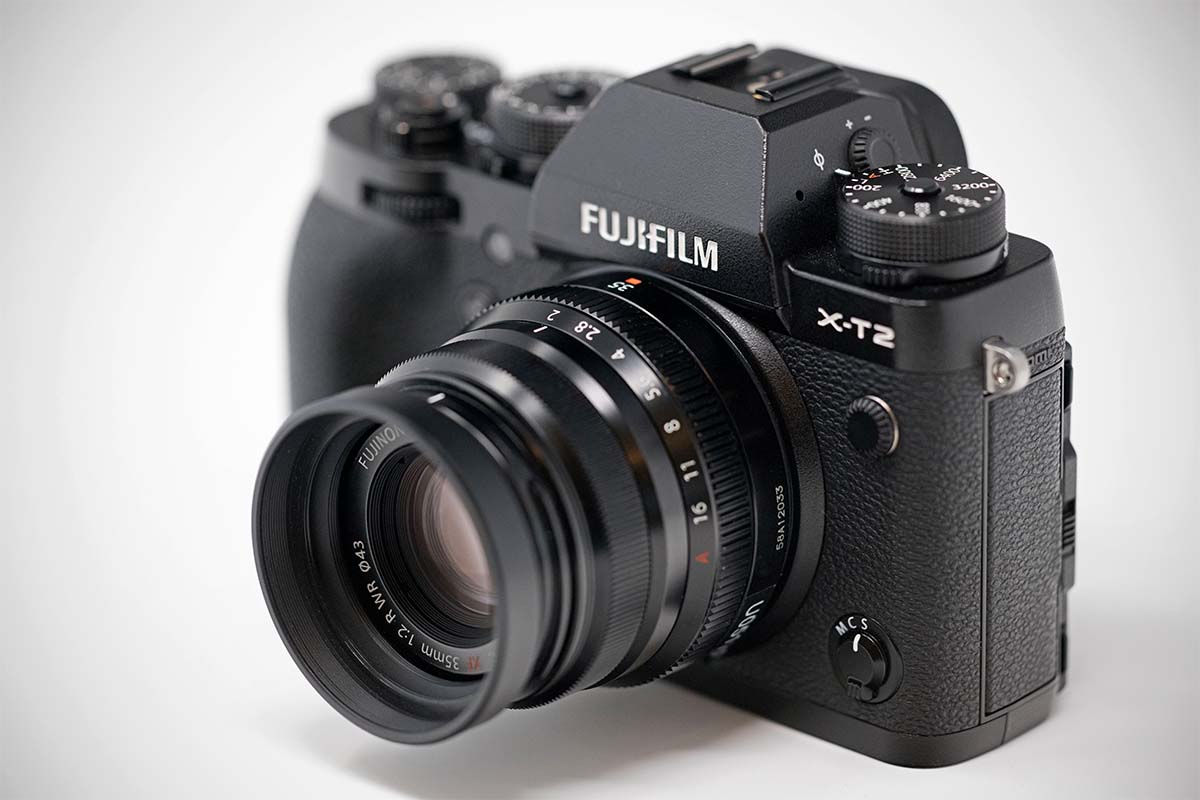
An increasingly common feature on new mirrorless cameras in 2020 is in-body image stabilization, which helps offset the effects of camera shake. The names vary by manufacturer, but the technologies are similar: the sensor is able to adjust for small movements, thereby creating photos and videos with less blur. Sony claims that in-body stabilization is worth up to 5.5 stops, and Olympus up to 6.5 stops with image stabilized lenses, which would be impressive if accurate. All in all, we've found this technology to be difficult to quantify but very helpful in doing what it advertises-we have far fewer blurry images from our cameras with image stabilization.
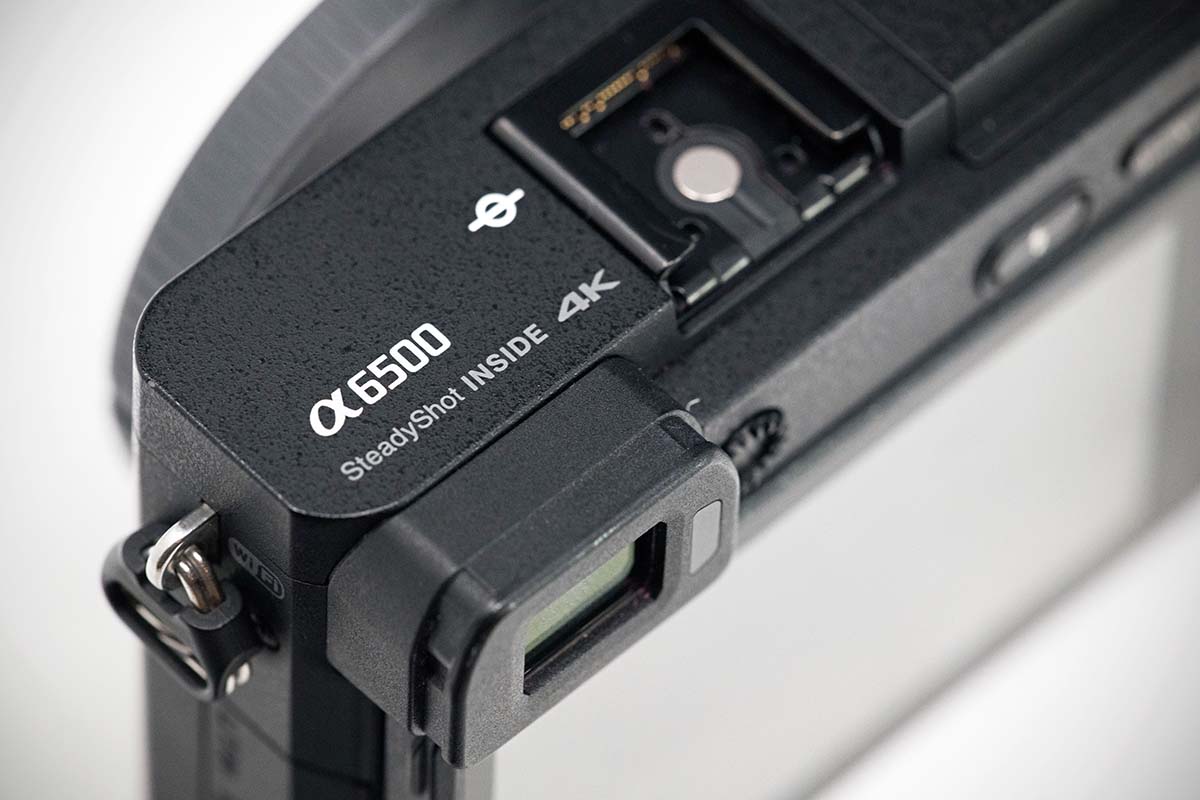
In terms of specific brands and models, Sony's latest Alpha a7R III and a7 III feature in-body image stabilization, as does the crop-sensor Sony Alpha a6500. Most new Olympus cameras do as well, including the E-M10 Mark II, E-M5 Mark II, and E-M10 Mark III. And even Panasonic and Fujifilm are jumping onboard, including the Lumix G9 and X-H1. It's worth noting that the market is right at the tipping point: currently it's mostly high-end and some mid-range cameras that feature in-body image stabilization, but it's starting to trickle down to most new mirrorless cameras regardless of price point.
Similar to in-body image stabilization, 4K video once was a rare feature saved for select premium cameras, but it's now common all the way down to entry level. There are a plethora of factors that dictate how good a mirrorless camera is at shooting video, including resolution, autofocus and tracking, available video speeds (these can vary greatly by model), the LCD screen, and video-centric features like 10-Bit recording and HDMI sockets. The good news is that video is getting better and better across the board, and today's mirrorless cameras are leaps and bounds ahead of where they were even a few years ago.
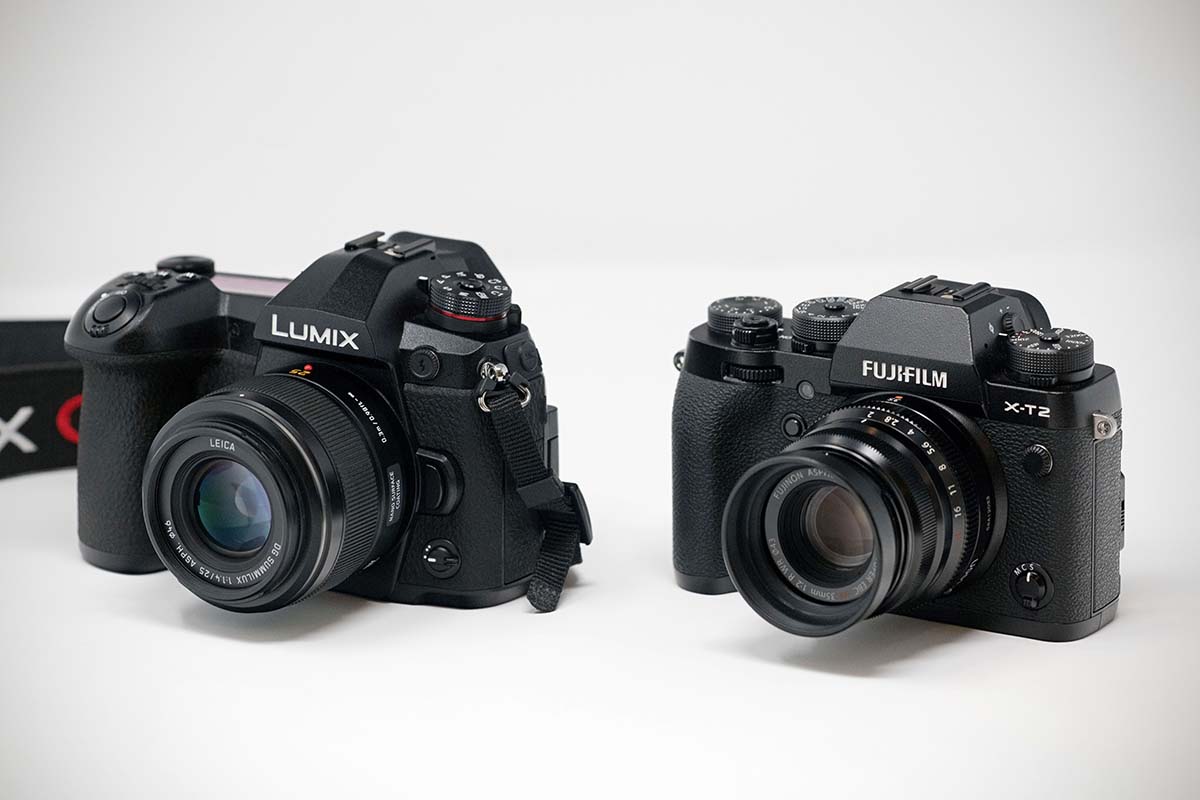
In general, Panasonic is the video hegemon in the mirrorless camera world. Many professionals use the Panasonic Lumix GH5, which is hands down the best mirrorless camera for video. Sony's mirrorless are a close second, including the videographer-focused a7S line, and even the a6500 and previous generations are pretty darn impressive in this regard. Olympus is next in line, and Fujifilm mirrorless cameras are now serviceable in the video department but really excel at still photography.
.jpg)
Plugging your camera into a USB port on a desktop or laptop and uploading photos manually is becoming increasingly unnecessary. Built-in Wi-Fi is a nice perk available on virtually all new mirrorless cameras, allowing you to transfer and upload photos and videos to your device or social media platform directly from the camera (some even offer light editing in-camera). The software and Wi-Fi platforms vary by manufacturer, and some are easier to use and less buggy than others, but we like the option of using Wi-Fi.
One consideration to keep in mind: using Wi-Fi to transfer photos all of the time can eventually take a toll on your camera's processor. Accordingly, we recommend only using the Wi-Fi to transfer images when time is of the essence and you need to make quick selections or edits to your images. Don't be afraid to use Wi-Fi, but if you have a cord handy or can insert the memory card into your computer, doing so will help prolong the life of your camera.
Mirrorless cameras get a lot of praise for their compact size and low weight, which makes them attractive for outdoor and travel photographers on the go. It's true that mirrorless cameras weigh less than digital SLRs by forgoing the bulky internal mirror systems (hence the name "mirrorless"), but the difference is not quite as much as you might think. For example, and these aren't exact apples to apples comparisons, the new Sony Alpha a7R III weighs 23.2 ounces for the camera body, while leading full-frame DSLRs like the Nikon D850 (32.3 ounces) and Canon 5D Mark IV (28.2 ounces) both weigh quite a bit more. For a mid-range camera comparison, the Sony Alpha a6500 weighs 16 ounces, while the Canon Rebel T7i is 18.8 ounces and the Nikon D5600 comes in at 16.4 ounces. Clearly, the differences there are less pronounced than the full-frame comparison.
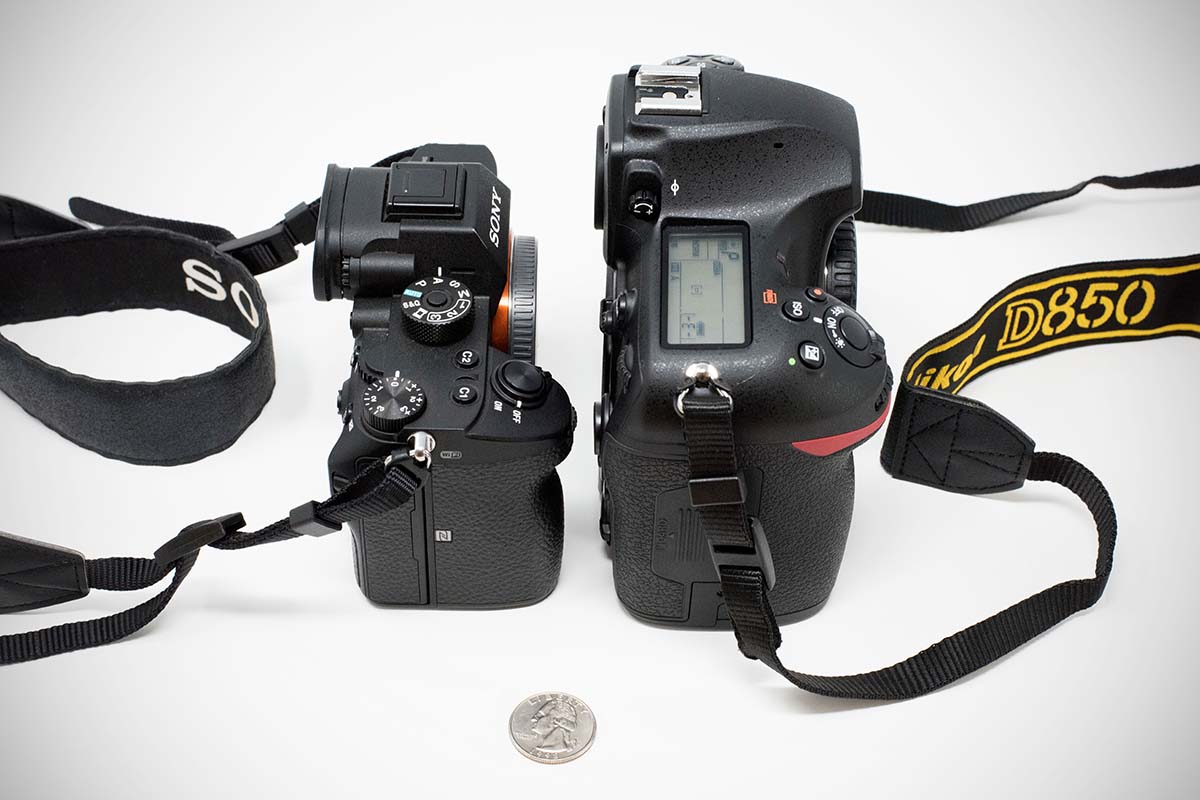
Of course, lenses also need to be taken into consideration. Again, this all depends on the systems you're comparing, but we've found that our Sony full-frame FE lenses sometimes outweigh their Canon or Nikon DSLR counterparts. A number of mid-range mirrorless camera systems in the Sony, Fujifilm, and Micro Four Thirds families do have some very cool pancake lenses that weigh next to nothing, but at the full-frame end of the spectrum, the weight savings often is incremental and not monumental. The larger point here is that mirrorless cameras are smaller and lighter than DSLRs, and form factor probably is the biggest difference, but the weight difference is not as much as many people think. Having said that, given that mirrorless image quality and lens availability have essentially caught up to DSLRs, we'll take every ounce we can get.
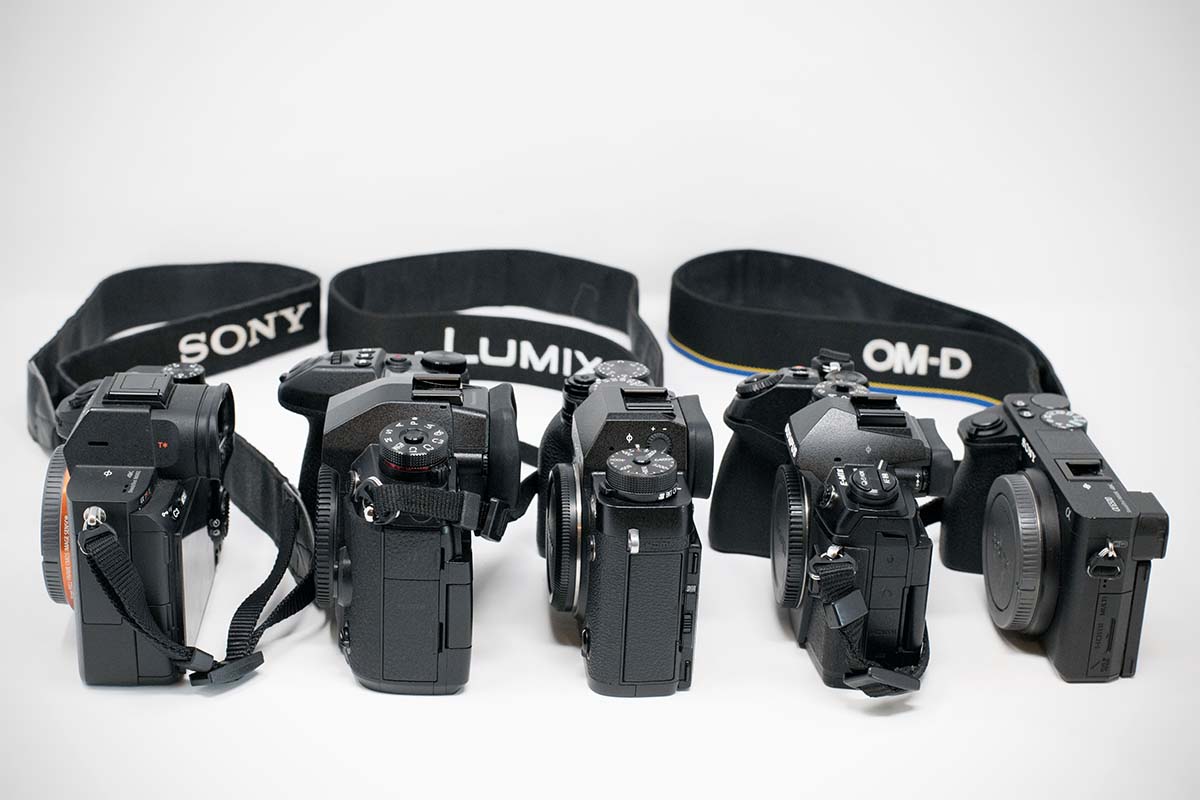
Some mid-range and most high-end mirrorless cameras are weather sealed for added protection from the elements. Weather sealing varies by manufacturer and model and there aren't universal standards, but the process involves adding rubber sealing and housing on the body and around buttons to make the camera more resistant to moisture and dust (both can be an absolute killer to your electronics). Calling these cameras weatherproof or waterproof would be an exaggeration, but they certainly can handle tough conditions and are popular among professionals who frequently are out in the field in inclement weather.
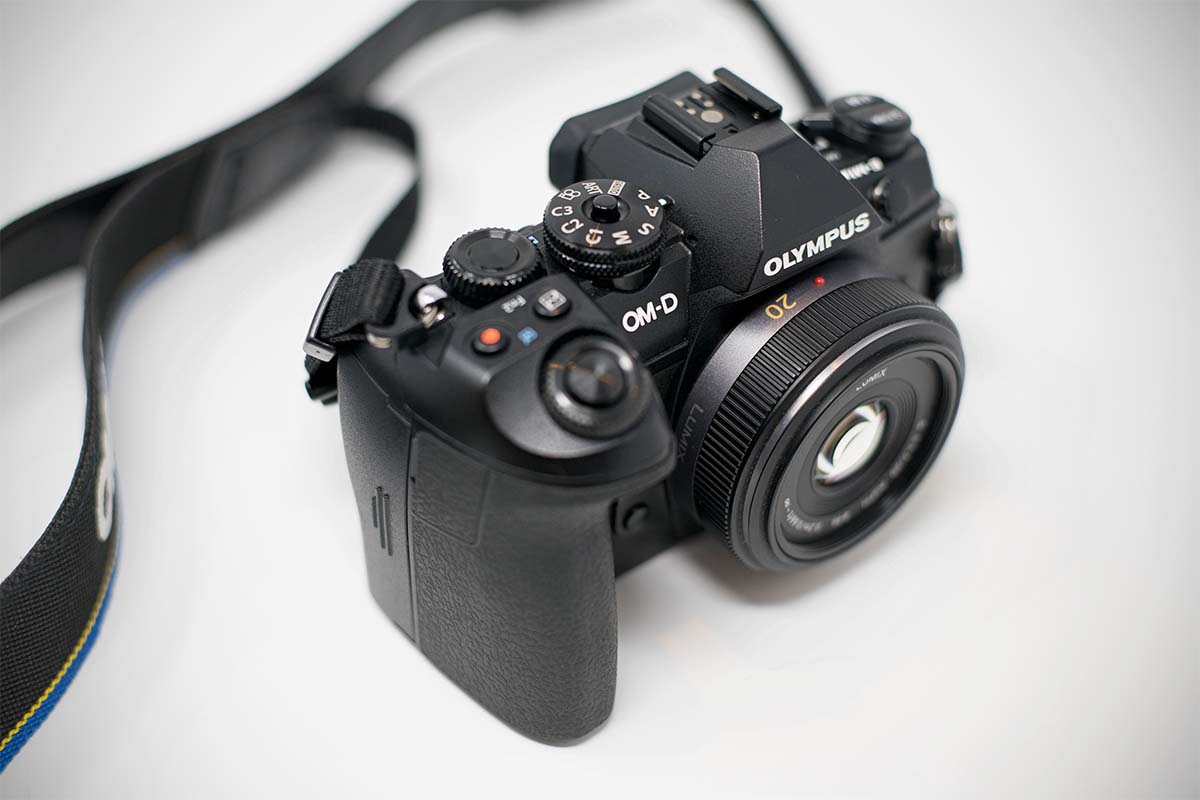
For a deeper dive into this topic, we have published a complete list of weather-sealed mirrorless cameras, which includes popular models like the Sony a7 series, Panasonic G9 and GH5, Fujifilm X-T3, Olympus OM-D E-M1 Mark II, and Sony a6500. Olympus and Panasonic cameras in particular are known for excellent weather sealing, but so long as you're careful and don't go into super harsh or wet conditions for extended periods, all of the cameras on our weather-sealed list should be adequate in keeping the elements out.
If you've owned a mirrorless camera, then you know how difficult it can be to keep the sensor clean. While removing the mirror from a typical DSLR has many benefits, one big downside is that your sensor is highly vulnerable to dust, dirt, moisture, and any other element waiting to make its way inside your camera. If you spend time shooting outdoors, it's inevitable that you will eventually get dust spots on your sensor, but it happens noticeably quicker with mirrorless cameras. And although it's totally normal to take your camera to a repair shop or send it back to the manufacturer to have the sensor cleaned, we have a few tricks to help you do that less frequently.
First, take some electrical tape, fold it over, and stick it to the inside of your camera body cap so that it's sticky on both sides. This will help by having floating dirt and dust stick to the tape rather than your sensor while you're storing your camera. Next, buy a Giottos Rocket Blaster and be sure to use it frequently. It's a super effective tool for quick cleanings of dust that isn't already fully stuck to your sensor. One last tip: make sure your camera always is turned off when switching lenses. When turned on, camera sensors hold a small static charge, making them magnets for dust. By turning your camera off before switching lenses, you'll ensure that your camera isn't unintentionally attracting dirt and debris. With these tips and regular use of the automatic sensor cleaning feature that most cameras offer, hopefully you won't be clone stamping and spot healing for hours in post.
When people talk about mirrorless cameras, one of the biggest complaints you'll hear about is the shorter battery life compared to DSLRs. While this is a valid argument, don't let it scare you away from mirrorless and know that the future is bright. Cameras like the Sony Alpha a6500, Fujifilm X-T3, and Olympus OM-D E-M10 III do tend to have relatively short battery lives and we would recommend buying a few extra batteries for these systems if you plan on being out all day. But newer systems like the Sony a7R III and Panasonic Lumix G9 boast bigger and newer batteries that are much more effective than their predecessors. While they may not carry quite the same capacity as what one might be used to with a digital SLR, these larger batteries can last through a full day of shooting and will pack more than enough power for most photographers. While we still recommend carrying an extra battery or two as a backup (it never hurts aside from the extra weight), you shouldn't have the same battery anxiety as in the early days of mirrorless.
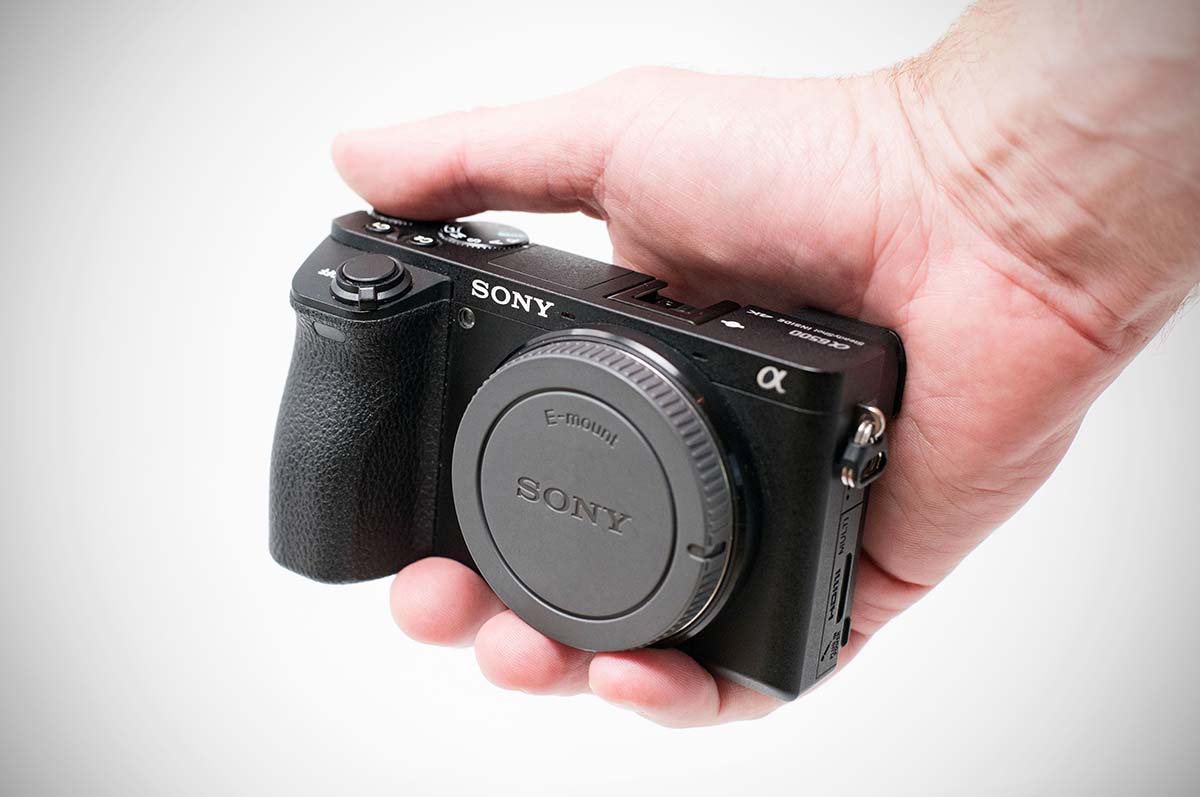
Regardless of what body you're shooting with, there are a few things you can do to help your batteries last a bit longer. First-and it may seem obvious-be sure to turn your camera off when you're not shooting. It's pretty normal to snap a few photos and walk around with the camera still on, and you'll save valuable battery life by remembering to flip the camera off between scenes and shots. Next, put your camera in "airplane mode" unless you are using the Wi-Fi. Most new cameras have Wi-Fi capabilities, which is a great feature, but can be draining on your batteries over the course of a day. Unless you're actively using it, flip it off and save some juice. Last, in cold environments, make sure to keep your batteries warm. This can seem like a bit of an inconvenience, but taking a battery out of your camera and putting it in a warm pocket when not shooting can mean the difference between a battery that lasts all day and one that dies way too quickly.
Mirrorless cameras are still relatively new, with most having been released in the last five years. Accordingly, the lens selection is less varied than for Nikon and Canon DSLRs, which have been on the market for decades. Olympus and Panasonic mirrorless cameras have Micro Four Thirds mounts and you can use these cameras and lenses interchangeably. The selection of Micro Four Thirds lenses is massive and ranges from budget to professional. Sony's E-mount lens offerings have grown significantly, and there are plenty of good options for their Alpha series cameras (albeit less than Micro Four Thirds). Fujifilm has fewer XF-mount lenses but there are plenty of quality models, particularly at the high end. Nikon and Canon have much more limited lens collections, but as they continue to grow into mirrorless, we expect to see a large increase in the available options relatively quickly.
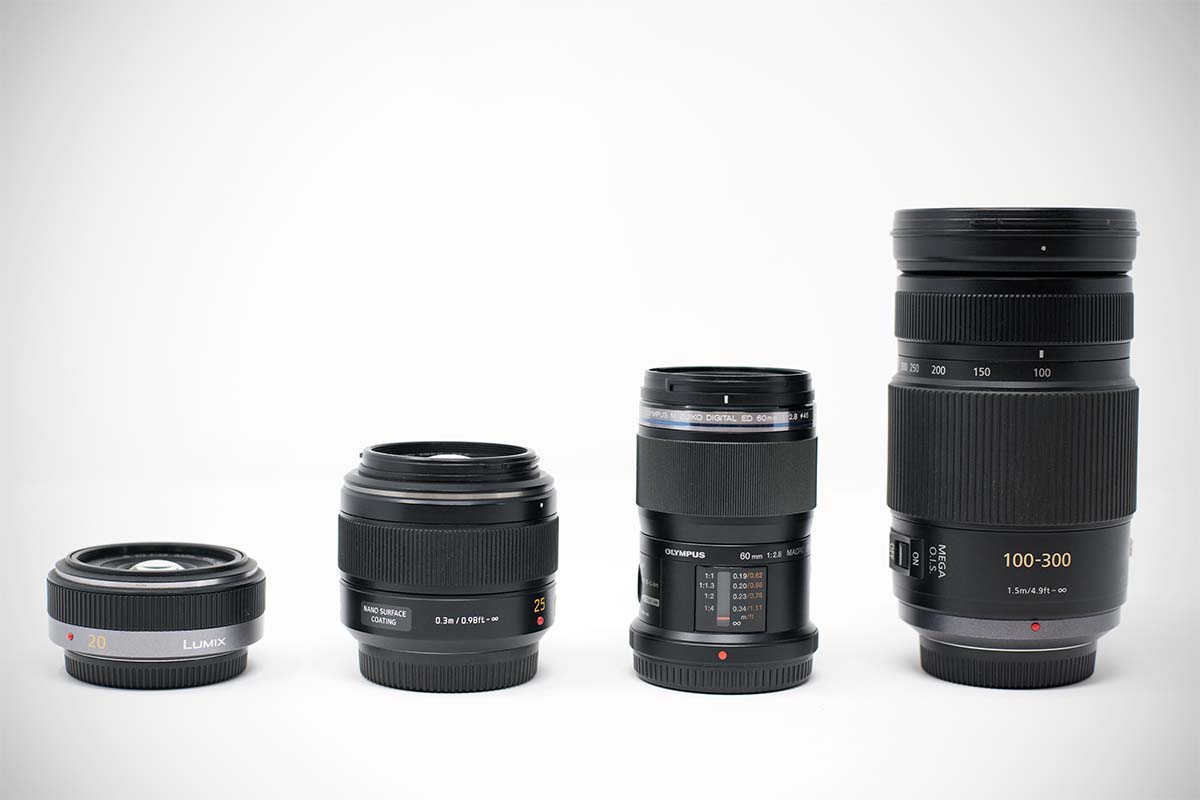
A big question mark in the mirrorless boom has been: where do Nikon and Canon fit into all of this? As two of the biggest players in the photography world and with so many loyalists who have shot with either brand for decades, it was a bit baffling to see their slow progression and hesitation to hop on the mirrorless train. That all changed in 2018, when Canon released the EOS R and Nikon the Z 6 and Z 7. All three models are full-frame powerhouses designed to go head-to-head with Sony and the initial results have been impressive. We still like Sony's lineup best, and particularly due to its multi-year head start on creating native mirrorless lenses, but you can expect this arms race to continue to heat up in 2020 and beyond.
Back to Our Mirrorless Camera Picks Back to Our Mirrorless Camera Comparison Table